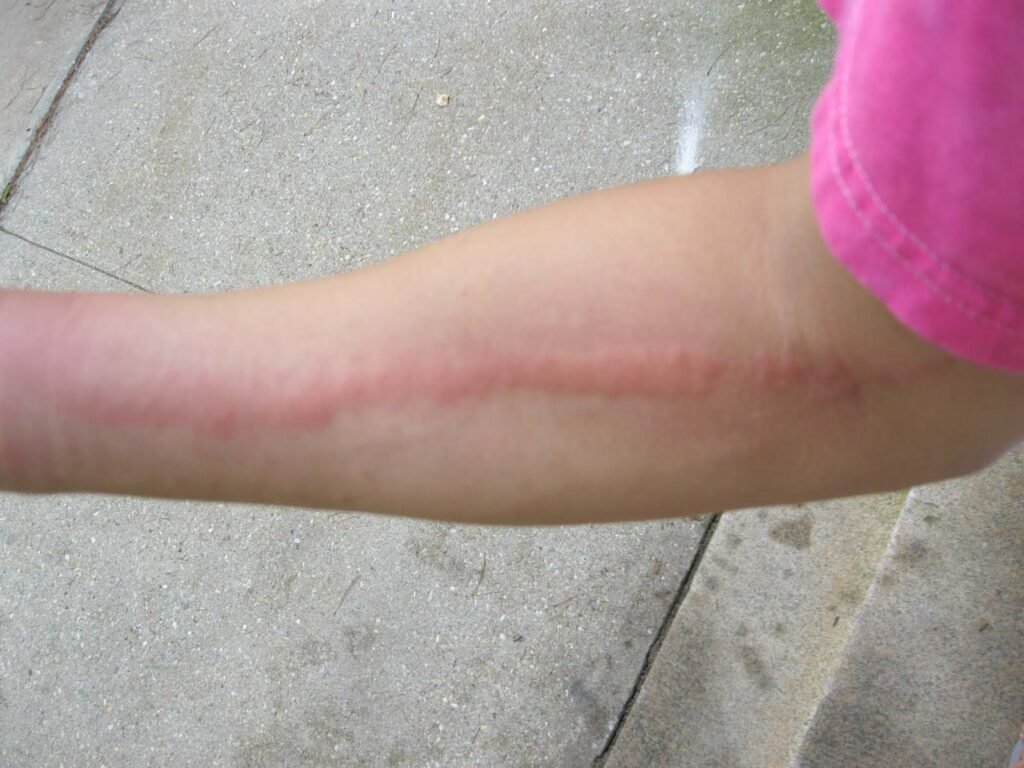Lymphangitis is an inflammation of the lymphatic vessels, which are part of the lymphatic system responsible for draining lymph fluid and helping the body fight infections. It often occurs as a result of an infection that spreads to the lymphatic vessels from a nearby area.

Causes:
- Bacterial Infections:
- Streptococcus and Staphylococcus species are common causes. These bacteria can enter through breaks in the skin, such as cuts or wounds.
- Cat Scratch Fever: Caused by Bartonella henselae, which can lead to lymphangitis in some cases.
- Viral Infections:
- Certain viral infections may cause lymphangitis, though bacterial causes are more common.
- Fungal Infections:
- Rarely, fungal infections can lead to lymphangitis, especially in immunocompromised individuals.
- Parasitic Infections:
- Certain parasitic infections might cause lymphangitis, although this is less common.
Symptoms:
- Red Streaks: Red streaks or lines extending along the lymphatic vessels from the site of infection, often visible on the skin.
- Swelling: Swelling in the affected area, which may include the surrounding tissues.
- Pain and Tenderness: Pain and tenderness along the inflamed lymphatic vessels.
- Fever and Chills: Systemic symptoms such as fever, chills, and malaise.
- Enlarged Lymph Nodes: Swollen and tender lymph nodes near the site of infection.
Diagnosis:
- Physical Examination: Assessment of symptoms and visualization of red streaks and swelling.
- Blood Tests: To check for signs of infection and inflammation, such as elevated white blood cell count and C-reactive protein levels.
- Cultures: Cultures of blood or wound samples to identify the causative bacteria or fungi.
- Imaging Studies: In some cases, ultrasound or other imaging studies may be used to evaluate the extent of the infection or to identify any abscesses.
Homoeopathy Treatment:
Remedies are chosen based on the specific symptoms and individual characteristics of the patient.
Here are some homeopathic remedies that might be considered for lymphangitis:
- Belladonna: For acute lymphangitis with intense redness, heat, and throbbing pain along the lymphatic vessels. This remedy is often used when symptoms come on suddenly and are accompanied by fever.
- Hepar Sulphuris: For painful, swollen lymphatic vessels with a tendency toward suppuration (pus formation). Useful when there is significant sensitivity to touch and the area feels worse with cold or drafts.
- Mercurius: For inflamed lymphatic vessels with severe tenderness, fever, and sweating. It is indicated when there is a pronounced feeling of general malaise and systemic symptoms.
- Lachesis: For symptoms of constriction, tightness, and significant discomfort along the lymphatic vessels. This remedy may be used when symptoms worsen with warmth and there is a sensation of tightness in the affected area.
- Apis Mellifica: For lymphangitis with pronounced swelling, burning, and stinging sensations. It is used when the swelling is painful, sensitive, and better with cold applications.
- Rhus Toxicodendron: For lymphangitis with discomfort and stiffness, especially if symptoms improve with movement and worsen with rest. This remedy is useful when there is a general feeling of being better while on the move.

